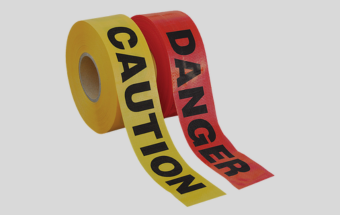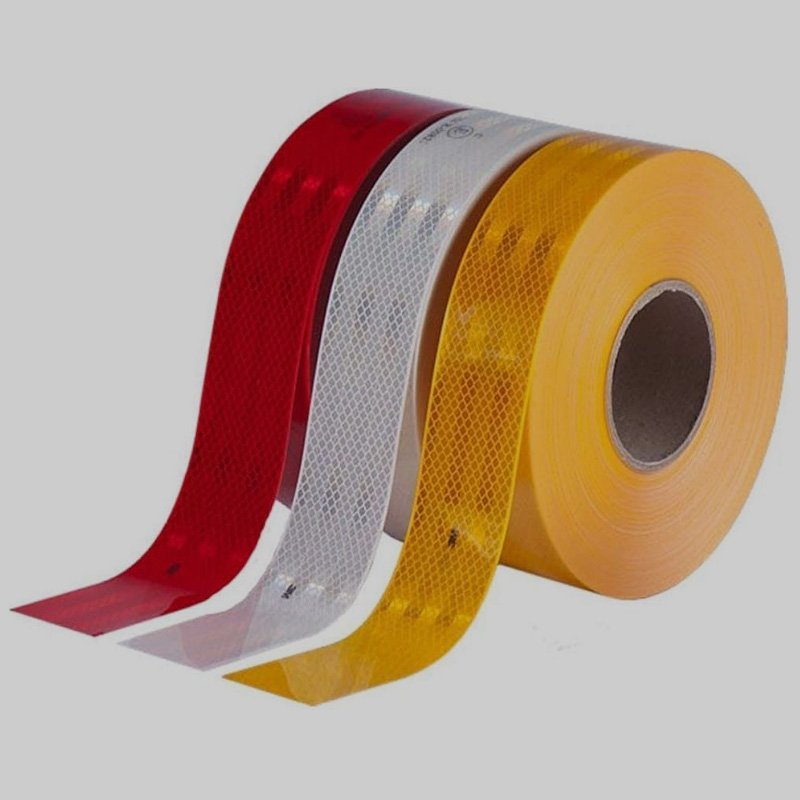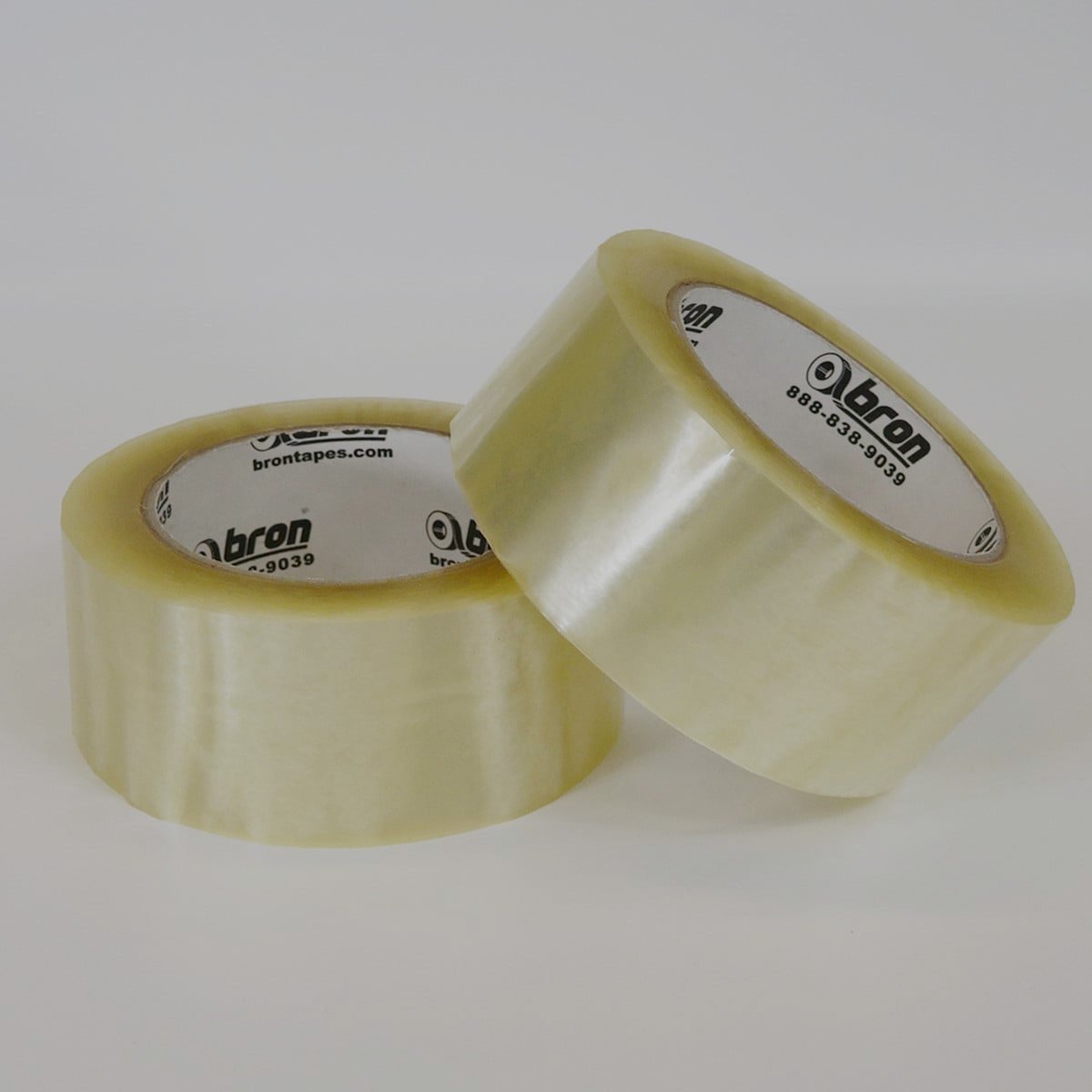Using warning tapes is one of the simplest and most efficient ways to improve safety and lower accident rates. Warning tapes are meant to draw attention, mark off particular locations, and direct movement in congested areas. They are often brightly colored and embossed with clear statements. Warning tapes create obvious barriers that quickly convey important information, whether you are supervising a building site, an outdoor shed, a community gathering, or a do-it-yourself project at home. Let’s know warning tapes in detail without further ado!
What is Warning Tape?
The long, flexible strip of warning tape, also known as barricade tape or caution tape, is made of nylon, PVC, or polyethylene. It usually comes in bright colors like red, brown, white, or yellow caution tape. It typically has printed cautions like “Caution,” “Hazard,” or “Do Not Enter.”
Warning tape’s main purpose is to visually alert people to possible threats and deter them from entering dangerous or restricted areas. Warning tape’s patterns and designs often adhere to safety standards such as ISO or OSHA, guaranteeing that the messages are readable in a variety of settings.

Types of Warning Tapes and Their Features
Depending on your needs, warning tapes come in a variety of designs, materials, and styles. They are essential in drawing attention to dangers, encouraging safety, and guiding people’s movements. A list of many warning tape kinds and their distinctive characteristics can be seen below:
1. Warning Tape in Yellow
Warnings or hazards are indicated by bright yellow caution tape, which is quite apparent. It is frequently observed at support zones, on damp surfaces, and in labor areas. The bright yellow color attracts attention and serves as a warning to be cautious or stay away from the area. This tape is frequently adjustable in width and length to accommodate a variety of indoor and outdoor uses.
2. Safety Tape with Stripes in Red and Silver
The red-and-silver-striped tape is usually used to mark off off-limits areas, like regions where an accident happened or where public gatherings are happening. Visibility from a distance is improved by the characteristic diagonal stripes. To meet particular needs, including crowd management or identifying dangerous areas, this tape’s width, thickness, and printed text can be changed.
3. Police Warning Tape
Police often use a special kind of tape called “lawman caution tape” to mark crime scenes or accident locations. It comes in typical sizes, including 50 mm in width and 200 mm in length, and is made of strong, weatherproof materials like HDPE. Usually, the tape shows police signs like “Police Line Do Not Cross” to stop illegal
4. Red Danger Barricade Tape
Glowing hazard tape or red danger barricade tape is designed to warn people of serious dangers like chemical spills, imminent threats, or dangerous areas. Generally speaking, coral caution tape indicates a greater degree of hazard than yellow caution tape. To satisfy certain production requirements, it can be customized in a variety of sizes and wrapping styles.
5. Reflective Tapes
Reflective tapes are used to improve vision in low-light or gloomy conditions. These vivid tapes are perfect for marking lines in areas like taxi zones, warehouses, and factories. They are available in red, silver, yellow, and blue. Light is captured by the reflecting substance to represent fresh starts. Using flashlights or car headlights helps make items or risks visible from a distance.

6. Black and Yellow Hazard Warning Floor Marking Tape
Floor tape in black and yellow is used to alert people to potential dangers. People are warned about potential hazards on the ground, such as equipment zones, storage docks, or slick places, by bright yellow tape with a distinct line pattern. For floors in labs, warehouses, and marketing areas, it is typically made with backing and sturdy materials like OPP.
7. Detectable Underground Warning Tape
Standard metal detectors may detect identifiable warning tape since it has a metal backing. In order to avoid future workers from inadvertently destroying concealed structures, it features warning indicators identifying hazards such as gas pipelines, water lines, and electrical lines. For a variety of practical instruments, width, time, and printing formats can be altered.

8. Underground Non-Detectable Warning Tape
Although invisible marking tape is made especially for metal surfaces, it functions similarly to ordinary tape. It serves as a reminder that finding buried objects using a metal detector is not always successful. This tape, which is usually made of sturdy plastic, usually has obvious warnings about potential dangers such as power, water, smoke, or communication lines.

9. Tracer Wire Detectable Underground Warning Tape
Tracer coil visible warning tape combines the look of tracer wires and warning tape. Sturdy stainless steel wires are frequently used in this type of tape. By using specialized light sensors, it not only acts as a visible alert but also makes detection simple. Using extremely precise tools for planning and safety precautions is commonplace.

10. Carton Sealing Tapes
Carton finishing tape is a type of adhesive tape used mostly for box sealing and occasionally labeling. These tapes, which are made of materials like OPP, can be altered in terms of width, color, size, and printed branding. They are great for fastening objects during storage and transit and guarantee a firm hold.

11. Double-Side Adhesive Tape
Because it has adhesive on both sides, double-sided sticky tape enables surfaces to adhere to one another without displaying tape lines. Fine-blown glass mesh variations provide more robustness without sacrificing visibility or ease of removal. They are perfect for short-term use or in vehicles intended for long-distance transportation because they generate very little trash.
12. Anti-Slip Warning Tapes
The rough and sticky warning tapes made for slick surfaces help lower the chance of trips and falls. They improve the safety of people and property and are frequently seen in commercial, modern, and residential settings.
Benefits and Significance of Warning Tape
-
Enhanced Safety
The ability of warning tape to quickly and efficiently notify people of possible dangers is one of its main benefits. Its eye-catching patterns and vivid colors draw attention right away, making it practical in crowded spaces or dimly lit settings. This kind of tape is frequently found in a variety of settings, including technical operations, public meetings, and instructional websites. It acts as a worldwide symbol that helps to avoid accidents and injury.
-
Versatality
The versatility of warning tape is yet another important advantage. It can be applied in many different contexts, including outdoor environments, collections of used materials, and sectors such as building, law enforcement, healthcare, production, and event planning. Its ease of handling, removal, and use to indicate dangerous areas makes it a handy tool. A versatile way to draw attention to concerns, whether they are short-term or long-term, is with warning tape. The ability to put it up fast is essential in situations that call for a speedy response.
-
Cost-Effectiveness
Another significant advantage is the cost component. Compared to obstacles, fencing, or signage, warning tape offers a low-cost and highly visible substitute. This enables businesses, governments, and other organizations to uphold safety regulations without having to make large infrastructure investments.
Furthermore, it offers both written information and visual cues through its frequent use of colors and sporadic correlation with certain terms (such as “Caution,” “Hazard,” or “Lawman Line“). This clarity reduces the possibility of misinterpretation, guaranteeing that even individuals who are not familiar with the
Warning tape serves a purpose beyond simply signaling danger. It also affects enforceable laws and established agreements. It takes a lot of work to mark dangerous areas and reduce noise to meet safety standards because these actions may affect legal requirements or result in repercussions. An event shows its dedication to guaranteeing everyone’s safety, including residents and visitors, by using warning tape. This promotes a safety-first mindset and improves the event’s reputation.
-
Ease of Use and Flexibility
Warning tape also helps with space arrangement and efficient tracking of changes. It makes mobility easier and helps avoid crowding, confusion, or unwelcome closeness by marking off safe routes, limited areas, or emergency exits. It can provide suitable emergency solutions, keep people away from dangerous buildings, and guide them to safe departures in troublesome locations.
Applications of Warning Tapes
1. Construction Sites
At construction sites, warning tape is extremely important because it alerts employees, visitors, and the general public to potential risks. Open trenches, bulky materials, unfinished buildings, and other dangerous objects can be found on many construction sites.
The purpose of this tape is to clearly identify these dangerous areas and warn people to move carefully through them or stay away from them completely. Whereas red caution tape hazard tape designates locations with more serious risks, like regions with falling debris, where only qualified personnel are allowed, yellow caution tape indicates general hazards.
2. Crime Scenes
Warning tape is essential for locating evidence and controlling access to locations in misdemeanor prosecutions. Yellow tape is quickly removed from crime scenes by law officials because they are worried about unauthorized people entering the area.
The tape, which typically reads, “Police Line – Do Not Cross,” establishes a clear limit that discourages individuals from getting too close. This prevents the crime scene from being altered and permits investigations to continue unhindered. It also gives everyone confidence that authorities are appropriately monitoring the situation.
3. Roadwork and Traffic Control
Caution tape is frequently used around traffic signals and on construction sites. In order to prevent such incidents and preserve traffic flow, quick repairs for congested routes, accident-prone regions, and zones that require explanation must be implemented right away.
Employees mark pedestrian walkways, alert drivers to restricted roads, and direct taxis using tape that is brightly colored. Caution tape is a quick approach to warn of hazards and guide traffic when permanent signs cannot be put up immediately, particularly in low-visibility circumstances.
4. Industrial Facilities
Caution tape also helps to keep places like stores and warehouses organized and safe. Accidents are prone to occur in these places since they are usually busy with moving traffic, cars, and active employees.
Caution tape is used to mark off-limits areas, to show where safety gear is required, and to show safe pathways for employees. Locations commonly use color coding to improve staff visibility of potential hazards, such as glow-in-the-dark and white for fire-related risks or black and yellow lines for dangerous regions.
5. Public Events
Caution tape is widely used at public events, including races, concerts, and celebrations, to control crowds and ensure safety. Organizers lay out this tape to create boundaries, control lines, assign VIP zones, and mark the locations of emergency exits. Since these events typically draw crowds, caution tape works well for temporarily directing guests and setting up space. During the event, it can be swiftly installed, modified as necessary, or taken down.
6. Maintenance and Cleaning Areas
Caution tape acts as an obvious notice of potential hazards, such as a slippery floor, a broken elevator, or ongoing construction. This easy method can drastically lower the risk of mishaps like electrical shocks, falls, and slips. To create a safety zone around the hazard until it is fixed, cleaning crews and maintenance personnel use caution tape.
How to Choose the Right Warning Tape and Manufacturer
Consider Visibility
A crucial consideration when choosing warning tape is visibility. Bright and colorful signage makes sure the tape is visible and easy to see in places with lots of traffic or poor lighting. Certain warning tapes have special features that make them easier to see in low light or the dark. Because of this feature, they are perfect for security at any time of day. “Verify the quality of the substance and proceed.”
Evaluate Material and Durability
The tape’s capacity to draw attention is mostly determined by its durability and quality. It is best to choose tapes for outdoor use that are composed of sturdy, weather-resistant materials like PVC or polyethylene, which can withstand rain, wind, and sunlight. Less robust materials may be appropriate for residential use, particularly if the tape is meant for temporary use or low-traffic areas.
Assess Adhesive Strength
Another important consideration is the adhesive strength, especially in areas with heavy traffic or those near machinery. In these situations, using caution tape with a powerful adhesive guarantees that it stays firmly in place and efficiently conveys dangers for a long time. An easily detached tape needs to be checked frequently because it may cause further safety problems.
Verify Regulation Compliance
Finally, it is critical to confirm that the warning tape conforms to certain laws. To adhere to safety regulations, companies and local governments may allow a range of tape colors, designs, or signage. Making sure your caution tape complies with regional laws and safety standards creates a safe atmosphere and shields you from
Choose High-Quality Warning Tapes Manufacturer for Maximum Safety
Select reliable warning tapes that ensure your area remains safe and secure all the time. So, it is time to choose a trustworthy warning tape manufacturer to guarantee that your neighborhood is always safe and secure. The strength and visibility you can rely on are provided by Jackwin’s HDPE warning tapes for hazardous locations where safety is crucial.
These tapes are strong and long-lasting since they are made of materials that are resistant to wear, moisture, and UV radiation. Are you trying to find something unique? Jackwin offers reliable warning tape production options to customize your tape with different colors, sizes, and distinctive designs to meet your needs. Also, with reliable assistance for each order, you are not just buying tape; rather, you are making a smart decision for long-term security and comfort.
Conclusion
In conclusion, caution tapes are essential for maintaining safety in a variety of settings, including offices, social events, and construction sites. Knowing the many kinds of caution tapes, their components, and when to apply them enables you to make well-informed judgments that improve safety and adhere to legal requirements. Contact us for your next project!
FAQs
How do I choose the right warning tape for my needs?
Consider the kind of danger, whether you are outside or indoors, the level of visibility needed, and how long the risk will last.
What are the different colors of warning tape, and what do they signify?
- Fire hazards are shown by red and white.
- Physical threats are indicated by black and yellow.
- Radiation concerns are indicated by magenta and yellow.
- Traffic warnings are indicated by orange and white.
- Malfunctioning equipment is indicated by blue and white.
- Safety information and emergency aid are provided by the green and white.
What materials are warning tapes made from?
The materials that are commonly used are vinyl, polyethylene, and polypropylene since they are weatherproof and durable.
What is warning tape used for?
Warning tape warns people about dangers or dangerous locations. By identifying areas that need caution or should be avoided, it encourages safety. The purpose of warning tape is to alert individuals to potential dangers and discourage them from going to potentially hazardous areas.
Can warning tapes be customized?
Indeed, warning tape can be made in a variety of colors and sizes and can have particular branding or regulatory messaging.
What is Wire Detectable Warning Tape vs. Aluminum Foil Warning Tape?
Wire detectable contains a metal strip that can be found with a wire finder. This is often employed for underground utilities, allowing detection devices to easily identify the tape. Whereas the aluminum layer provides durability and protection against different weather situations. It is used in very high temperatures or where additional resistance to weather and tearing is necessary.
Where should warning tape be applied?
It should be used in dangerous areas where safety is crucial, such as construction zones, next to machinery, or on uneven terrain.
Detectable vs Non-Detectable Warning Tape
Detectable warning tape contains an internal metal strip or wire, which can be located with specific equipment. This feature makes it perfect for identifying cables or underground services.
Non-detectable warning tape does not contain any metal or special materials. It is often used for temporary notices or to indicate above-ground objects, making it easier to find them later.
Detectable Warning Tape vs Tracer Wire
Detectable warning tape is a special kind of tape that has a metal strip inside. Tracer wire is usually used alongside warning tape to enhance identification accuracy.


-80x69.png)

